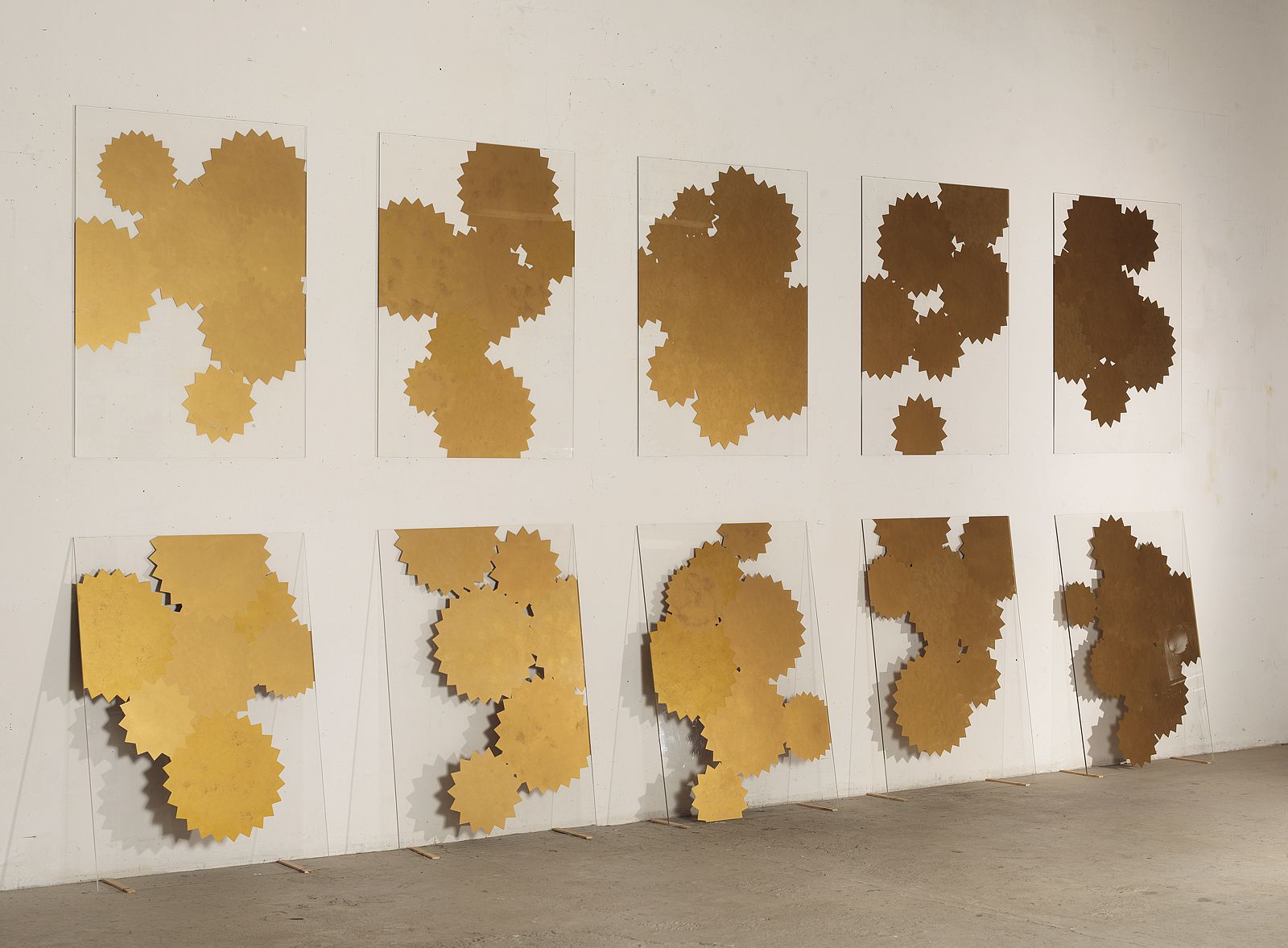Hubert Kiecol
Golden
Since the 1980s, the artistic work of Hubert Kiecol (*1950) has been celebrated for its clarity, stringency, and serene equanimity. Our exhibition “Golden”, which derives its name from a work with the same title, featurs several select sculptural pieces and places these into context with the artist’s other major thematic field, the graphic works.

Hubert Kiecol, Golden, 2001, © VG Bild-Kunst, Bonn 2010, Photo: Rosenstiel
Next to sculptural pieces, such as “Palace Girl” or “Séparée”, the exhibition highlights large-format drawings, wood prints, screen-prints, and etchings. In their size and simplicity these two-dimensional pieces accost the viewer with pure elemental forms and formations. In single pieces, in pairs, and in rows the ensembles interface and develop fundamental variations that bear an inherent, sculpturesque precision of material and form.
The works aren’t pictures in the conventional sense or representations of the material world that stand before us, but archaic types and iconic signs that create reminiscences and yet stand for themselves. Kiecol’s form types and signs are open, they connect with the surrounding space in a very specific manner. They influence the space within which they stand and, in turn, the surrounding space affects them. Through this interaction an interplay unfolds in conjunction with the viewer.
Opposing themes such as form and matter, closeness and openness, boundaries and transcendence, emptiness and density, gravity and weightlessness, objectivity and abstraction can only be grasped as an inextricable – paradoxical – constellation by taking in varying perspectives. Kiecol achieves this in the most concentrated form. In a fundamental way, he shows us what abstraction is: not a single irreversible step, but a perpetual process of production, just as in the reception of visual forms.
As a “post-minimalist” or “post-concrete” sculptural position, Kiecol can associatively expand the diverse relationships with architectural space and architecture. Kiecol’s works oscillate between mass and fragility, heaviness and lightness, openness and unity, interior and exterior space. They do not adore themselves and yet they ask the viewer to find a point of view that balances distance and closeness.
Hubert Kiecol’s work, in its calm and quiet consequence, is an important pole in the excited world of art. It also shows how important the repeatedly emerging minimalist “common thread” in the various sculptural trends of the past thirty years, in the carpet of contemporary art, is.
The exhibition shows works from the early 1980s to the present within the series of solo exhibitions of sculptural practice in the Museum für Gegenwartskunst Siegen (Gregor Schneider, Charlotte Posenenske, Richard Serra).